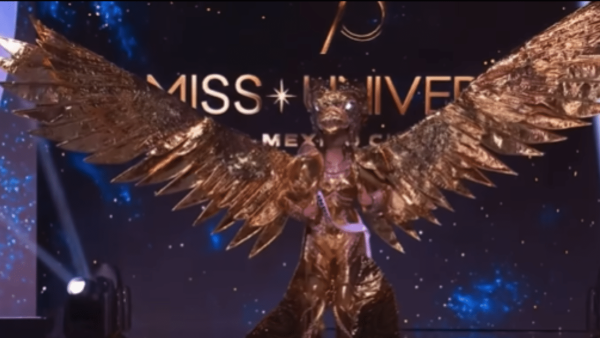In a heartfelt Instagram post, designer Nguyen Ngoc Tu shared that the creation was a “labour of love” meant to honour India’s golden age, symbolised by the Golden Bird.
The Golden Bird is not just a beautiful visual concept but a profound cultural symbol representing wealth, prosperity, and the brilliance that India once held as one of the world’s most prosperous nations. Tu also mentioned that the costume was designed to strengthen the cultural bond between India and Vietnam.
India’s association with the term ‘Golden Bird’ or ‘Son Chidiya’ dates back to ancient times, when the region was a hub of thriving trade, innovation, and cultural wealth.
India earned the title because of its thriving economy, its rich natural resources, and its fertile lands. Historical records show that institutions like Takshashila, Nalanda, and Telhara attracted students from all over the world, enhancing India’s reputation as a centre of knowledge and prosperity. The country was one of the most productive regions globally, with international trade flowing in abundance, contributing to its vast wealth.
This cultural resurgence continued for centuries, with temples serving as vast treasuries of gold and valuable artefacts. Renowned historians have noted that from 1 CE to 1600 CE, India was one of the most prosperous nations globally. British historian Angus Maddison even highlighted that India was the leading global producer during this period, a testament to its economic power and global influence.
‘Sone Ki Chidiya’ – in ancient times, gold was intrinsically linked with wealth and prosperity, and the bird symbolised freedom, soaring high above the constraints of ordinary life. This metaphor of the bird as free to fly was a symbol of India’s flourishing economic and cultural legacy.
From the Vedic era to the Mauryan Empire and the Gupta period, India was known for its incredible wealth, with goods from the subcontinent highly sought after in global trade. The Gupta Age, in particular, is often referred to as India’s ‘Golden Age,’ marking a peak in India’s cultural, artistic, and intellectual achievements.
Rhea Singha’s national costume beautifully encapsulates this golden history of India, both in terms of wealth and cultural legacy. Through her stunning representation, she honoured India’s past, while also showcasing the vibrancy and diversity of modern India on the global stage.








